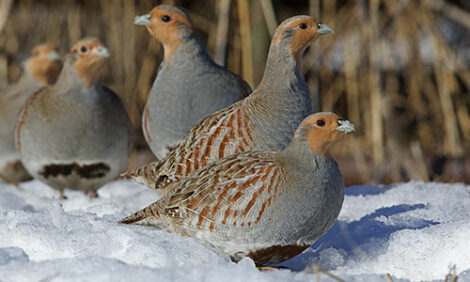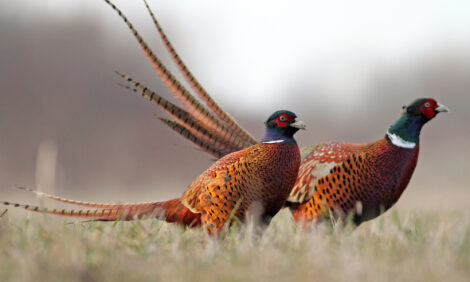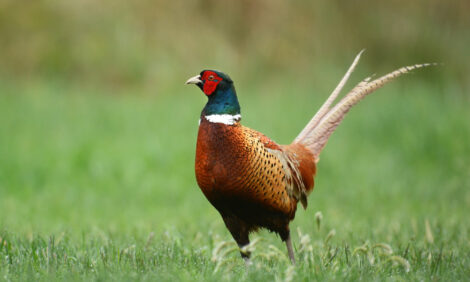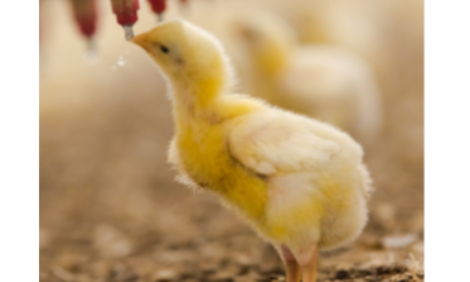



US Poultry Industry Manual - Surveillance and international trade
Learn about surveillance and international trade during an foreign animal disease outbreakPart of Series:
< Previous Article in Series Next Article in Series >
Editor's Note: The following content is an excerpt from Poultry Industry Manual: The Foreign Animal Disease Preparedness and Response Plan (FAD PReP)/National Animal Health Emergency Management System (NAHEMS) Guidelines which is designed to provide a framework for dealing with an animal health emergency in the United States. Additional content from the manual will be provided as an article series.
Surveillance
Within 48 hours of the identification of the index case, a surveillance plan will be implemented to define the extent of the highly contagious FAD outbreak and to detect unknown but Infected Premises and new cases quickly through a combination of observation and laboratory testing. This surveillance plan may include the susceptible wildlife population in the area. Information will also be gathered for a surveillance plan to identify disease-free zones so that this portion of the plan can be implemented within seven days of the identification of the index case. Infected, Contact, Suspect and At-Risk Premises will all be involved in some level of surveillance in an effort to control and contain disease spread or determine freedom from disease. Initial surveillance of susceptible animals will be visual inspection. As soon as practical, surveillance will include laboratory testing of susceptible animals. Contact and Suspect Premises should be inspected at least three times per maximum incubation period for the disease under investigation. During the highly contagious FAD event, surveillance could include on-farm observation, testing market animals, and at slaughter.
People
Visitors and employees can introduce or spread disease to susceptible animals if steps are not taken to mitigate these risks prior to entry. Sanitation and hygiene practices are important to prevent disease agent spread and include wearing clean clothing, coveralls, footwear, and washing hands before and after animal contact or glove removal. If the highly contagious FAD is zoonotic, additional personal protective equipment must be worn by all those handling animals.
The movement of people on and off the farm during a disease event must be documented to aid exposure assessments. Using a written log to record name, contact information, last contact with a susceptible animal species, and reason for being on farm including facilities entered/animals contacted is crucial. Prior to a disease event, records of this information may not be as readily available on all operations.
During an outbreak, personnel on farm should be limited to those essential for the day-to-day operation, making it easier to trace and minimize the risk of disease introduction. For all employees, records should be kept that includes their name, address, phone numbers, emergency contact, and information pertaining to off-site animal contact. In the event of a zoonotic highly contagious FAD, public health officials may recommend human surveillance via diagnostic testing.
Contacting employees will be critical. Higher risk personnel on a poultry operation are those individuals that visit multiple premises within a given day and have contact with other poultry or their housing areas. This includes employees having off-farm avian contact, veterinarians, and service providers such as individuals hired to beak trim, vaccinate, or move chickens, equipment repair personnel, rendering trucks, feed delivery persons, and sales persons. Strict adherence to biosecurity protocols should be required for farm entry and avian contact during an highly contagious FAD event.
Vehicle traffic
Vehicles and equipment can indirectly expose susceptible birds through mechanical disease transmission. Installing a barrier that requires vehicles to stop before entering the premises provides an additional control point and can facilitate monitoring and recording vehicle details. Cleaning and disinfecting tires, wheel wells, and the undercarriage of all vehicles which enter or leave a farm will likely be required on all Infected or Monitored Premises. It may be prudent to park vehicles that are not required on farm off-site. People and vehicle traffic on and off an operation during a disease outbreak should be documented. A written or electronic record describing the vehicle, driver name and contact information, last farm(s) visited, and reason for visit should be maintained for tracking purposes. This could be challenging for operations without personnel living on-site.
Disease monitoring
During an outbreak situation, susceptible animals on all operations must be closely monitored for clinical signs of the highly contagious FAD that meet the case definition. Poultry caretakers, especially on Contact, Suspect, or At-Risk Premises should be aware of the clinical signs and who to contact if disease is suspected. Accurate and rapid public awareness campaigns will be used to disseminate disease recognition and reporting information to animal producers and caretakers within the Control Area and Surveillance Zone. Poultry operations within the Buffer Zone will be routinely monitored utilizing slaughter surveillance, serological surveys, and investigation of reports of suspect disease. Slaughter surveillance will also occur in the Surveillance Zone. Free Area surveillance will occur through normal surveillance channels. Surveillance results and approved biosecurity protocols as a “proof of negative” status may be required for permitted movements of susceptible birds within the Control Area.
Sample collections
Premises with the highest risk of infection will have birds sampled for disease testing. Handling tissues and fluids from these operations requires strict adherence to biosecurity and infection control procedures. Poultry at harvest facilities may also have samples collected. Unless otherwise specified, samples will be collected by trained animal health personnel (veterinarians, animal health technicians – private or government). Depending on the disease, specific tissues and/or fluids will be obtained on farm after performing a full post-mortem exam (whenever possible).
Guidelines will be provided regarding the specific type of tissues needed, fresh or fixed, fluids (serum, whole blood), and details related to how to label and package them appropriately. See VS Guidance 12001.1 Policy for the Investigation of Potential Foreign Animal Disease/Emerging Disease Incidents (FAD/EDI) for more information. Personal protective equipment (PPE) such as coveralls and gloves must be worn by personnel handling the birds, tissues, and fluids.
If the disease is zoonotic, enhanced PPE should include goggles and an appropriate respirator (N-95 or N-99) or a full face shield if aerosolization is not a route of human exposure. All equipment used on farm to collect and transport samples and protect the personnel should be properly cleaned and disinfected in the designated area prior to leaving the farm. Care should be taken not to contaminate diagnostic samples with disinfectant as the highly contagious FAD will be inactivated providing false negative results. See the FAD PReP/NAHEMS Guidelines and SOP: Personal Protective Equipment (2011), Biosecurity (2011), and Cleaning and Disinfection (2011) for more information.
Sample submission
Early in the disease outbreak there may be a single laboratory or a select group of laboratories that can perform the diagnostic testing. Guidance will be provided regarding sample submissions to laboratories. This may change as the outbreak continues and other laboratories are able to perform the specific tests. Contact personnel at the receiving laboratory will provide specifics related to sample submission. There are some fundamental principles that must be adhered to in the event of a highly contagious FAD investigation to ensure accurate, rapid results.
Once samples are obtained, proper labeling is PARAMOUNT to ensure results are correctly reported. Submit samples with the appropriate paperwork (hard copy or electronic). This may consist of forms provided by the laboratory or animal health authority. The premises must be properly identified on all paperwork and sample packaging using a premises identification number, if available. Again, proper completion of the paperwork is essential so that the results are accurately reported to the submitting veterinarian or animal health authority. In some cases, samples could be submitted to demonstrate absence of the disease for permitted poultry movement and accurate, timely result reporting is essential.
Samples obtained in the field should be properly packaged to prevent leakage (individually sealed plastic bags around each fluid tube) and thus contamination of samples within or external to the box/cooler. Completed paperwork should also be placed in a sealed plastic bag. Cold packs are recommended instead of ice for transporting samples. Be aware of environmental temperatures and provide enough cold packs to keep tissues from degrading in transport.
Appraisal and compensation
Animal health regulatory officials will create an inventory of poultry designated for depopulation and appraise their fair-market value in order for compensation to be paid. Contaminated materials on farm (feed, bedding) will also be appraised as they may need to be disposed of in an effort to control disease spread. Facilities and equipment that cannot be properly disinfected must also be destroyed and fair market value assessed.
Mass depopulation and euthansia (FADS PREP/NAHEMS Guidelines and SOP)
To control disease spread, infected and exposed poultry may be depopulated by qualified personnel according to USDA-APHIS and AVMA guidelines. The method and procedures used for depopulation will depend on available resources and the population dynamics of susceptible poultry on the premises. This requires location-specific planning and preparation which is addressed in the FAD PReP/NAHEMS Guidelines and SOP: Mass Depopulation and Euthanasia (2011).
Disposal (FAD PREP/NAHEMS Guidelines and SOP)
Poultry carcasses and associated contaminated materials (e.g., feed, bedding) must be disposed of in a way to limit disease spread, using State or municipality approved methods. Once euthanasia is complete, specific personnel will be assigned to an operation to carry out these activities. For additional information, see FAD PReP/NAHEMS Guidelines and SOP: Disposal (2012).
Cleaning and disinfection (FAD PREP/NAHEMS Guidelines and SOP)
Facilities that housed infected poultry and equipment used in their daily care must be cleaned and disinfected to prevent the spread of disease to live poultry returned to the operation. Coordination of equipment, supplies, scheduling, and certifying work completed by the producer, contractors, or animal health response teams will be carried out by USDA-APHIS-VS. Items that cannot be adequately cleaned and disinfected will be properly disposed of once their value is determined. For additional information, see FAD PReP/NAHEMS Guidelines and SOP: Cleaning and Disinfection (2011).
Wildlife management and vector control
Wildlife susceptible to the highly contagious FAD can complicate disease eradication or control efforts. A coordinated effort between local, State, Tribal and federal agencies including the U.S. Fish and Wildlife Service, the Department of the Interior and State wildlife agencies is necessary to accomplish control without jeopardizing environmental ecosystems. Producers’ knowledge of area wildlife and potential exposure will be vital in this assessment and management process.
International trade
The intent of compartmentalization is to separate populations of poultry on the basis of management systems, which would allow veterinary authorities to demonstrate and maintain disease freedom in certain commercial establishments. This concept could be important for both domestic and international movement of poultry and poultry products, and thus the poultry economy. These markets are vital to the poultry industry. In the event of a highly contagious FAD outbreak affecting poultry, international trade of poultry and poultry products will be halted.
Compartmentalization is a relatively new concept and has not been fully implemented anywhere. The success of compartmentalization will ultimately be the result of bilateral agreements between the importing country and the exporting country; and our individual international trading partners will need to agree to recognize compartmentalization for a specific highly contagious FAD at their discretion. Compartmentalization in the face of an outbreak where resources are directed to immediate eradication and control measures would likely result in the diversion of limited resources of the official veterinary infrastructure and prolong the duration of quarantine measures. Zoning for most highly contagious FAD is a better utilization of resources and the benefit of progress toward eradication is shared by all within the disease free zone rather than only the owners of the compartment.
Although zoning remains the preferred approach, compartmentalization could help the U.S. facilitate disease control and the interstate movement of animals and animal products in the event of a highly contagious FAD outbreak and help to maintain domestic markets. In this case, using the concept of ‘free’ flock status to regain domestic commercial movements should be considered first. Compartmentalization parameters must be established and agreed upon with trade partners prior to the disease outbreak, internationally and between states. Successful compartmentalization is going to depend on producers, industry, and State and Federal animal health authorities developing and strengthening relationships and agreeing on procedures preceding a highly contagious FAD outbreak.
Reference: "USDA APHIS | FAD Prep Industry Manuals". Aphis.Usda.Gov. 2013. https://www.aphis.usda.gov/aph...
The manual was produced by the Center for Food Security and Public Health, Iowa State University of Science and Technology, College of Veterinary Medicine, in collaboration with the USDA Animal and Plant Health Inspection Service through a cooperative agreement.














